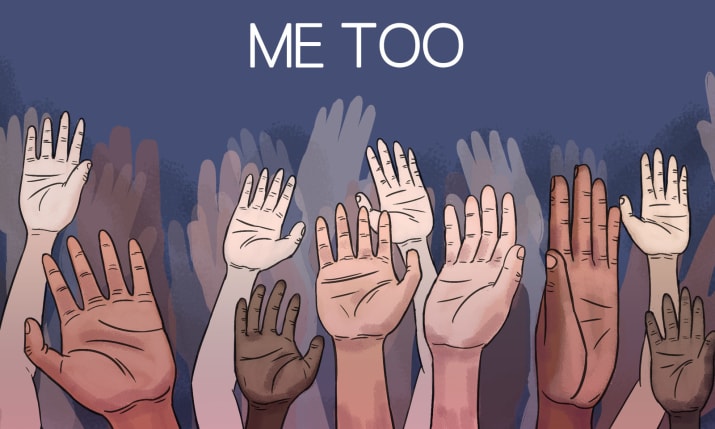Even before #MeToo, it was no secret that India had a serious problem with how it treats its women. Daily reporting of rapes, each more gruesome than the next, have ensured that Indians cannot pretend that the problem doesn’t exist. What #metoo has done however is to bring the issue much closer to home, by calling out those within your immediate social circles, and made you confront the fact that, perhaps, they are a part of the problem of as well.
While #MeToo gives us all a small glimpse at the scale of the problem in urban, privileged spaces, the data collected by the National Crime Records Bureau, goes far beyond incidents of rape, and instead point us towards indicators of a deeply ingrained culture of violence against women, deployed as a tool to assert control over one particular gender.
In terms of crimes against women in 2016, rape accounts for only 11.5% of the total cases under crimes against women, and yet stands at nearly 39,000 cases in 2016 alone. The most prevalent use of violence against women is in the form of “cruelty by husband or his relatives” (32.6 per cent) followed by “assault on women with intent to outrage her modesty” (25.0 per cent), and “kidnaping and abduction of women” (19.0 per cent). The illusion, that such a phenomenon is restricted to the country’s rural regions, is shattered when one sees that the national capital reported a crime rate that is nearly triple (160.4) the national average (55.2).
These numbers point to 2 things, one, that no geographical region in this country can claim immunity from the charge of being hostile towards women, and two, that violence against women is very often sexual and used primarily as a tool to control or “remind her of her place”. While the first point hopefully knocks out some of the delusions of urban dwellers, the second highlights how ones gendered identity often opens them up to forms of violence not usually deployed against men.
Nowhere, is this use of gendered violence more clear than in cases of crimes against Dalits. Work done by Juno Varghese and Paul Divakar at the National Campaign for Dalit Human Rights, highlight the targeting of Dalit women, with more than 5500 cases of rape and attempts to outrage the modesty of a woman, alone. What this tells us, is once again, something that most women know too well; that women and their bodies are often the locus of a power struggle between and within communities, making them the most vulnerable to external violence against a community, while also being subject to violence in the form of tradition, from within the community.
Instagram’s advocacy hashtags: #MeToo topped with 1.5 mn usage in 2018
Furthermore, the sheer number of cases brought before an overburdened judiciary means that for several women, the process becomes the punishment. Immediately after a harrowing ordeal, women are made to go through the mental and physical strain of recounting experiences over and over, in a judicial process that has long since turned numb to the suffering, with a proven history of victim shaming and character assassination. For millions of women this is too high a barrier to scale and for the few who can, society is all too fast to erect new ones.
For a fraction of this population then, #metoo becomes one of the few avenues to then seek justice in the solidarity of the oppressed and raise the alarm on how the NCRB numbers, as bad as they are, don’t capture the full extent of the problem in India today. If we then add to this, the fact that only a fraction of the country’s population is privileged enough to call out their harasser, think of the millions who would come out with their stories, had they the same platform and the opportunity.
Each call out must then be seen as a failure of a judicial process which turns women away and forces them to call out their harassers and narrate their suffering on social media amidst all its toxicity. The fact that judicial process, remains unapproachable and that women see little hope of seeking justice through it, speaks as much about failures of the judiciary, as it does about the desperation and grave injustice done to survivors.
Disclaimer: The opinions expressed in this article are the personal opinions of the author. The facts and opinions appearing in the article do not reflect the views of NEWSD and NEWSD does not assume any responsibility or liability for the same.


















